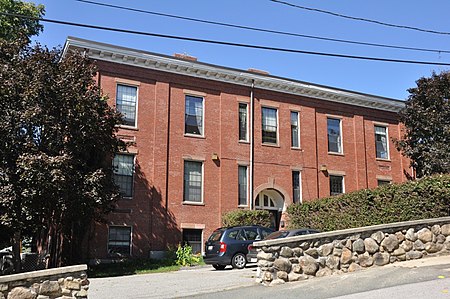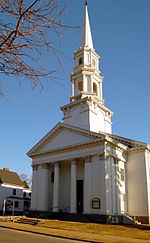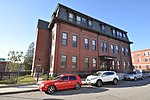School Street School (Haverhill, Massachusetts)

The School Street School is a historic school building at 40 School Street in Haverhill, Massachusetts, United States. The brick three-story building was designed by Joseph R. Richards and built in 1856. Stylistically it is a mixture of a number of popular revival styles of the mid-19th century. The building is located on a hill, and appears from some elevations to only have two stories. Its main entrances are located inside round brownstone arches, a typical Romanesque Revival feature. Its roof line features a deep, bracketed cornice, a typical Italianate feature. The bays of the north and south elevations are separated by decorated brick pilasters, a Greek Revival element. The building has a shallow hip roof which was originally topped by a cupola (removed during the early 20th century).The building was listed on the National Register of Historic Places in 1986.
Excerpt from the Wikipedia article School Street School (Haverhill, Massachusetts) (License: CC BY-SA 3.0, Authors, Images).School Street School (Haverhill, Massachusetts)
Water Street, Haverhill
Geographical coordinates (GPS) Address Nearby Places Show on map
Geographical coordinates (GPS)
| Latitude | Longitude |
|---|---|
| N 42.775 ° | E -71.071666666667 ° |
Address
Water Street 150
01830 Haverhill
Massachusetts, United States
Open on Google Maps










